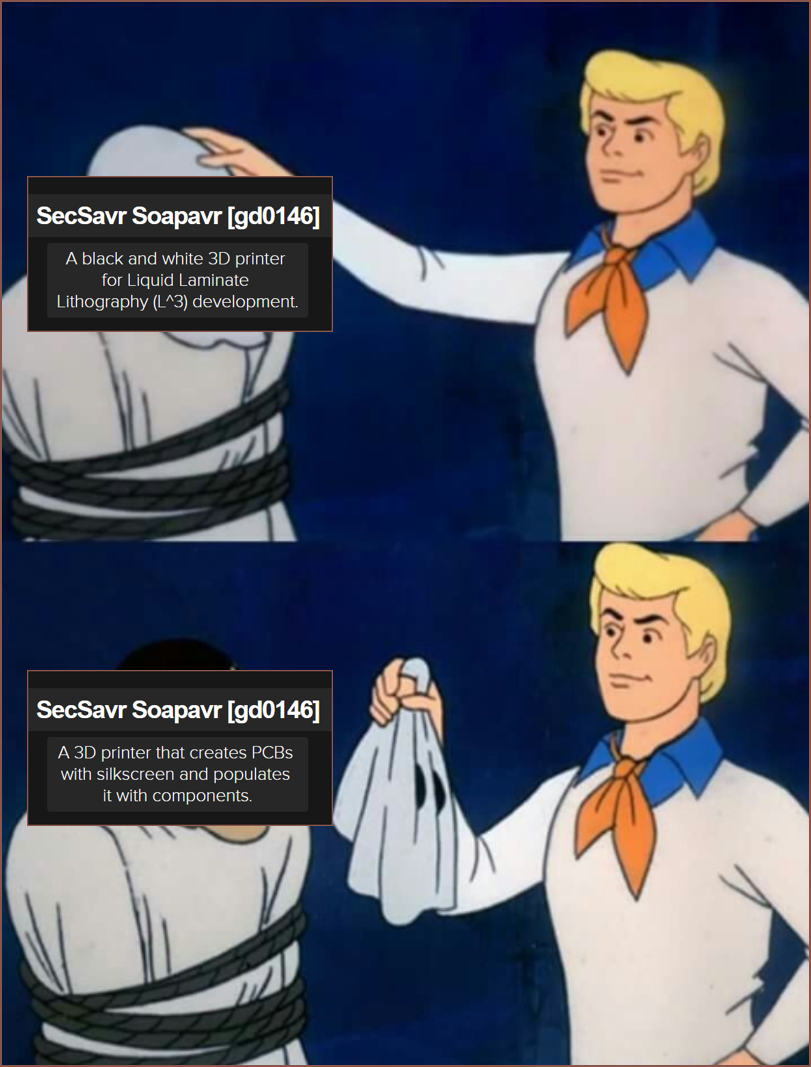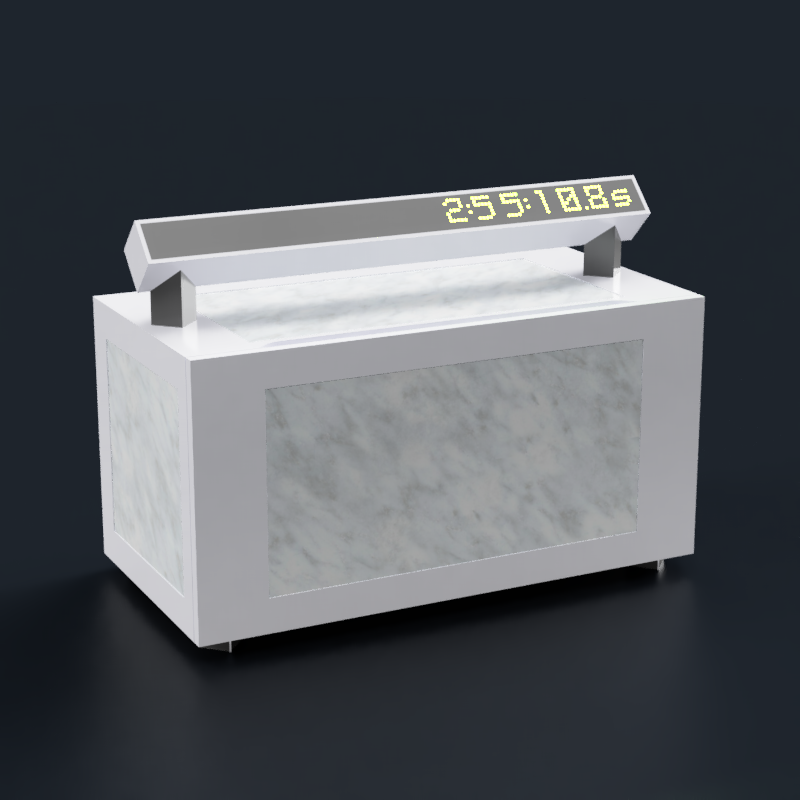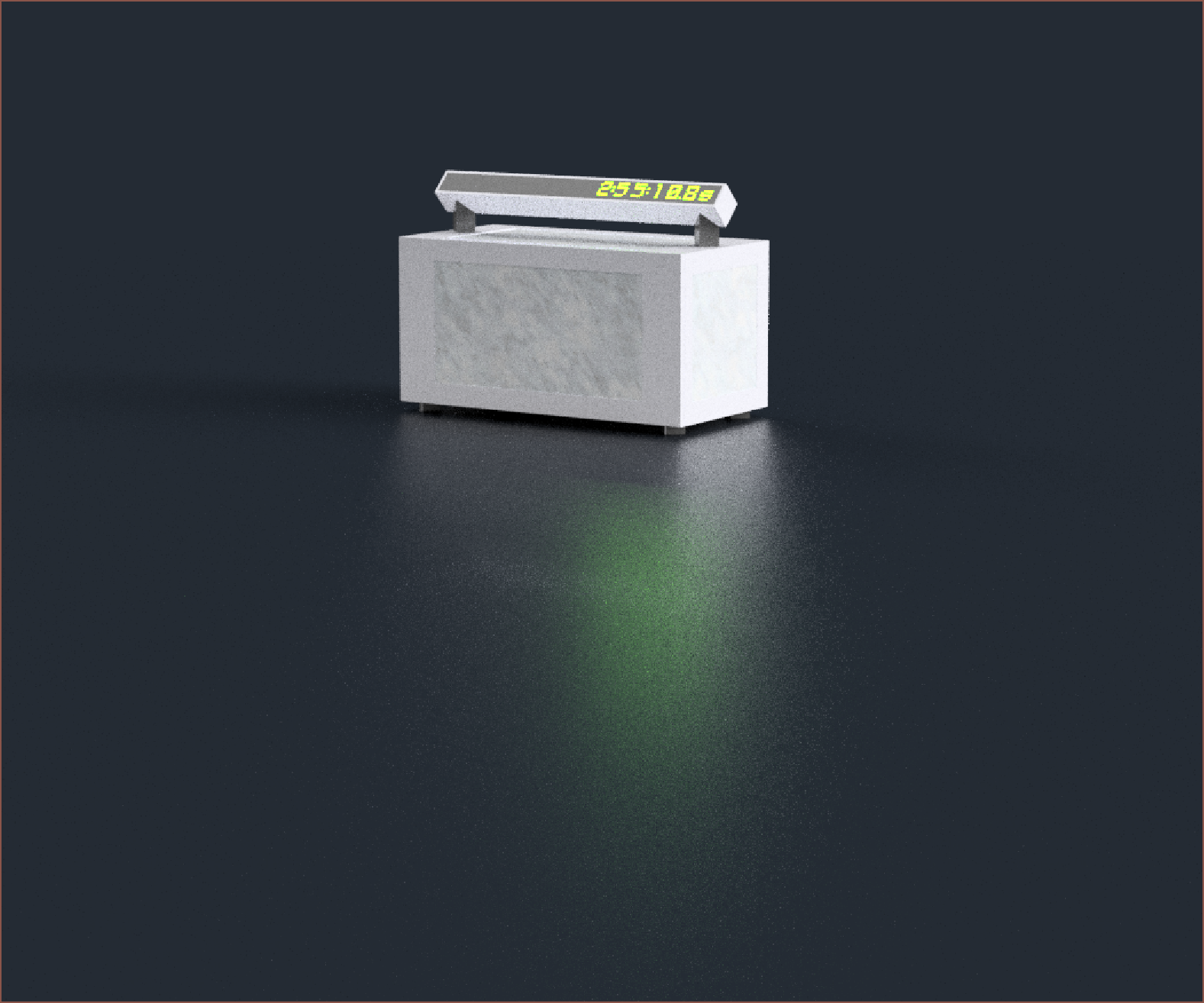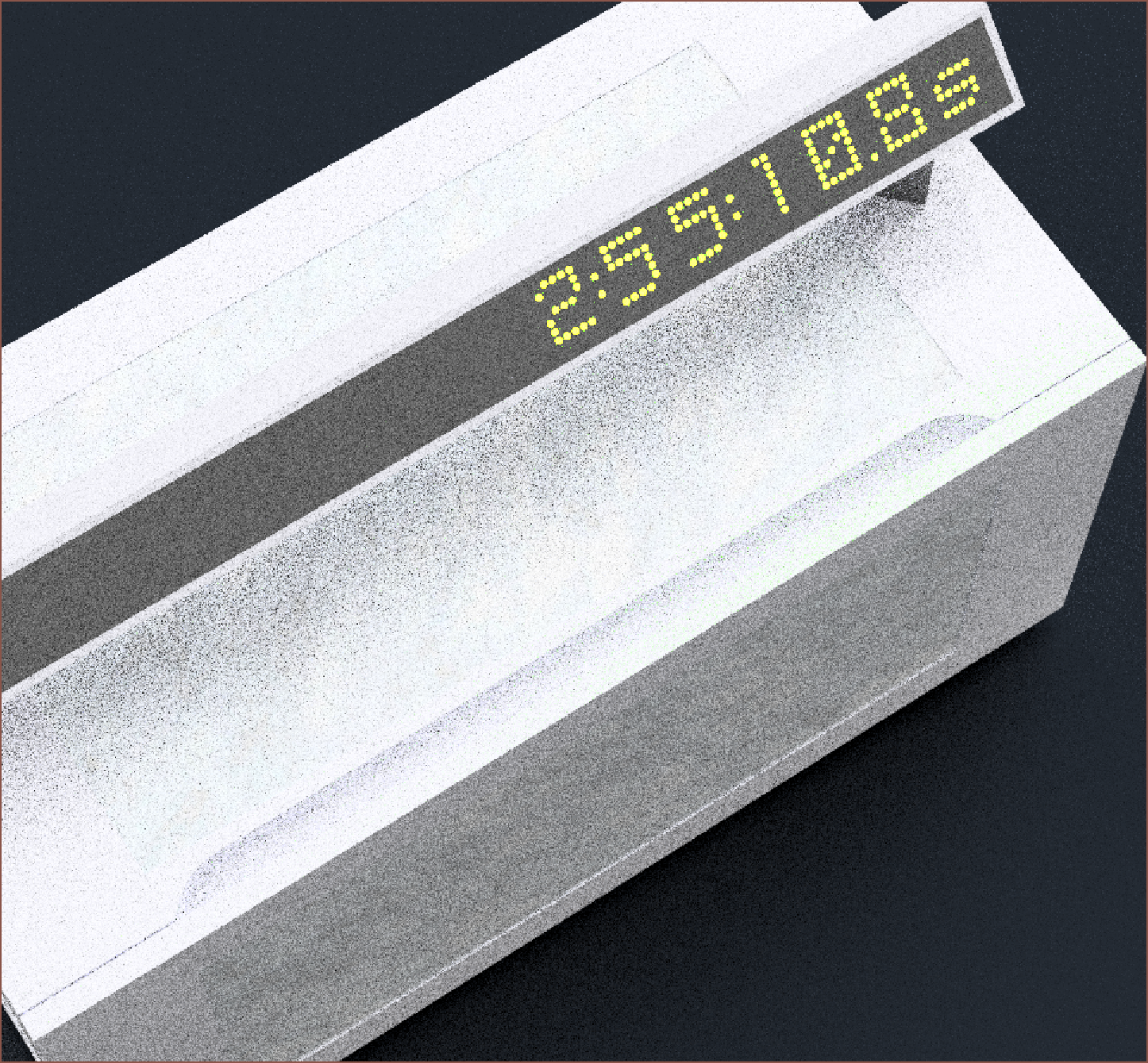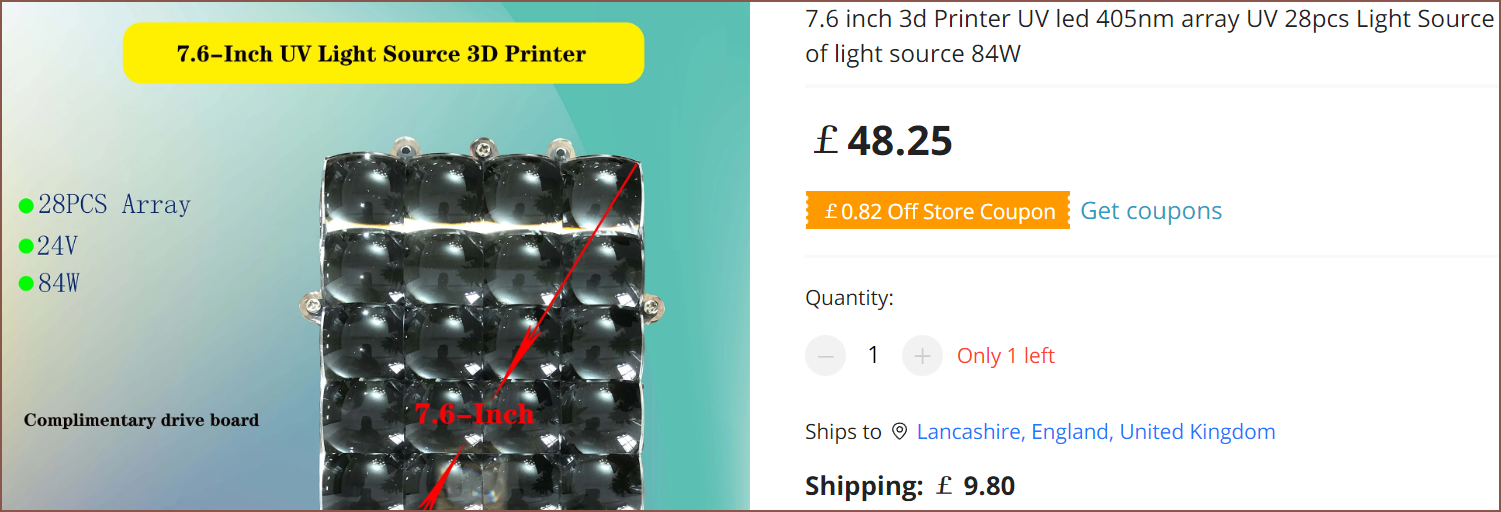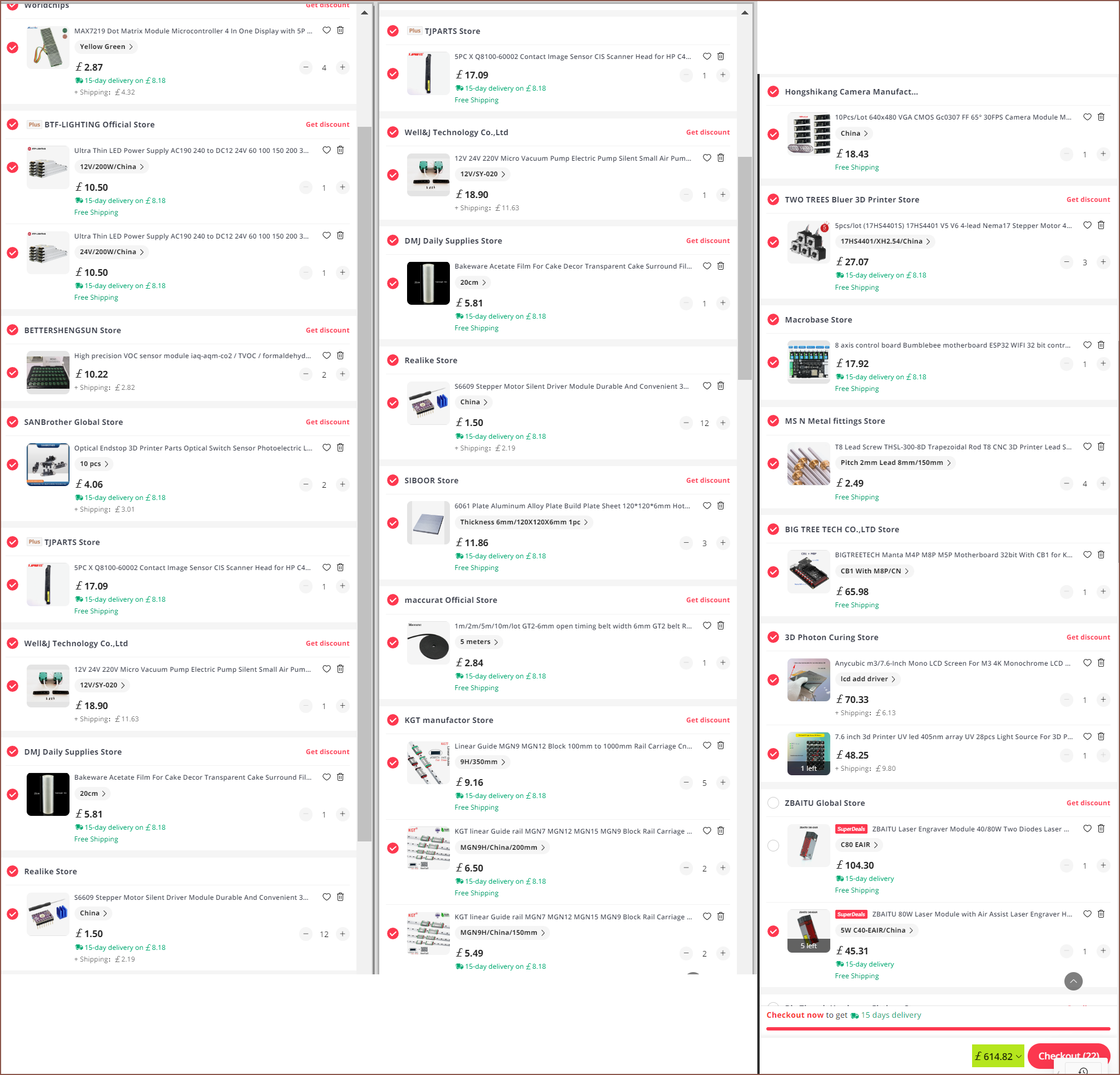-
[E1][A] I'm going to fight for 4 materials
06/15/2023 at 21:11 • 0 commentsBasically, if there's anything I could really use in the future, it's an on-demand PCBA service. Additionally, the allure for AME (Additive Manufacturing Electronics) has been much stronger for me than other features I've discussed in the #SecSavr Suspense [gd0105] project.
Embedded components, motors, mmRelayArrays, programmable matter elements, etc. These are all things I'm interested in, but 2 materials is rather limited. 4 materials changes the game for these applications (such as being able to print iron cores to copper coils), as well as allows for black+white+alpha prints with (dissolvable) support material.
Now this sounds like feature creep, but honestly, I should just take off the mask all Fred-from-Scooby-Doo style:
Yes, this does mean that the Pick 'n' Placers are going to make an appearance in here too.
For an 3D printer the size of the SecSavr Soapavr, the limited Z height would also be much less of an issue for PCB fabrication.
[2024 - Jul 13]
Because of how #Tetrinsic [gd0041] is (and has been) progressing this entire time, seeing complications with the Micronics printer (see below), and the mental overhead of also having to worry about leaving enough headroom for Future Me to add fast gantry for a (now £240 these days) 20W laser, I'm going to roll back to just trying to create a grayscale+transparency 3D printer, ideally one that's still large enough to print an A4.
One of the things I still remember from a Hanno Brawn interview is him saying this:
I don't know if it's controversial, but I live my programming life by one iron rule: that it's always okay to make a mess, but it’s never okay to build on top of one.
[...]
So go clean it up, before using it as a foundation for your next masterpiece.Basically, all the features I want still hinge on the base technology actually working, and I don't have that. And I still remember thinking that Tetrinsic would be a plain and simple ordeal -- actually, I still do but now I know a larger list of all the stuff that I need to get right. I see this as the "Discovering Items Percentage Effect", named after the times Windows Explorer started a large task, got to over 90% and then drops to 40% (for example) when it discovers an entire folder of files it needs to work on.
Back to the build volume, I had considered 160 x 320mm, but I still want to have the option of printing the 192mm #T^2 Tiles [gd0095] or, as mentioned earlier, a sheet of A4. The latter requirement was actually the reason why I got the CR10 back in Q4 2016 on Gearbest; it was a new printer with 0 reviews but also the only one at the time that had a print bed large enough for A4. Realistically speaking, however, it seems that I'd be stuck with the 8.9" 4K display as there are a fairly low amount of options that I can buy the LCD, UV matrix and HDMI conversion. It all seems to be a tad over £200 worth of parts.
-
[A] Using a 20W laser
06/06/2023 at 15:07 • 0 comments -
[M] Initial concept render
05/09/2023 at 19:41 • 0 commentsSize: 27x54x37cm. I plan to generate a print estimate that is accurate to the second; this is called the SecondSavr after all. I'd also like to give the user the option to show HH:MM:SS.s or SSSSSS.s format. The seconds format is more compact (3/6/0/0/.0/s vs 1/:0/0/:0/0/.0/s, where the slashes shows when a new matrix starts). Doesn't really need the percentage at that point. I don't think "hmn I wonder what percentage my microwave has cooked the food at.", but instead "How long left till the food finishes heating up?".
Yes, the handle looks sharp. This is a function-follows-form decision, since I doubt this printer will actually be lifted and moved more than it is looked at.
I've gone for a sharper / boxier looking typeface for the countdown timer. The "0" character probably shouldn't have a slash through it so that it's easier to discern from 8, but it does seem that I can virtually see the display from the other side of the room:
I originally planned for the handle extrusion to be completely white, but there wasn't a lot of display contrast.
I think the handle will successfully stand-out-from-the-crowd whilst still looking clean and modern.
There's a sleek cutout for opening the front door.
Like the current Suspense concept, the walls are ceramic tiles. Stiff, flat enough, looks beautiful, non-flammable and cheap = makes 100% sense to use.
Perhaps I could even get some Amazon Alexa intergration too. The entire bar has LED matricies in it, and I'm only using half for the countdown timer.
For an £800-900 box of parts, I think it looks good enough that such a price is justified.
-
[A] A solution... fails, due to the lack of Tetent [gd0090].
05/08/2023 at 20:26 • 0 commentsNope. Can't do this project at this specific time. The required level of mental compute is much beyond my current capacity.
Essentially, #Tetent [gd0090] is not something that (just) speeds up my projects. Instead, it is what makes them sustainably managable in the first place. It is the combination of a fast human-computer interface, #Tetrinsic [gd0041], with in-house task managment software for my specific requirements, #TaskPercent [gd0140]. Just like it's long and tedious to wait for a parcel to arrive before ordering the next thing in the basket (instead of just buying them all at once and them arriving all at the same time), having to pause every other project because I don't have enough organic RAM matter is going to take an amount of time I don't have the stamina for.
To give some perspective, the main component of #Coaxial Hotend [gd0144], the heatblock, is still seeing useful tweaks and updates added today, despite thinking that it was manufacture-ready 11 days prior. I created and refined the project for 5 consecutive days before making that call, and starting to realise that this will happen for every subsection of the Soapavr. It even took 72 hours just to have the resolve to decide that creating a feature-reduced, portable L^3 development printer is a recommendable endeavour.
I'm currently deep in thought just on the LED matrix holding handle, let alone anything that's actually doing the printing. If you're wondering, it's a confliction between Aesthetic Compliance and the main objectives of low-cost and durability. Those LED matrix screens are 13mm thick and I don't even need to model it in Fusion360 to know that the matrix and a 27mm OD tube will not fit inside a 40mm diamond square extrusion. Unfortunately, due to the project's expected minimum cost of £900, the solution will be rejected if it doesn't pass aesthetic compliance; DIY-looking projects can only justify DIY-looking budgets, and I can't do much anything on a £100 limiit.
This is the reason why I put a hold on #SecSavr Suspense [gd0105] back late August 2022. I thought I could sidestep now, but it really just seems that I forgot how truly vast and time-expensive even the most basic of [hard/soft/firm]ware projects are.
If Tetent fails, it sadly really does look like all my projects are going to sink with it. Coaxial Hotend gets a pass in a way because I need a working 3D printer to actually print the components for Tetent, but it's still on thin ice because any single-colour extruder could do that too.
-
[T] Initial Requirements and Thoughts
05/07/2023 at 16:42 • 1 commentCreating this project
I've learned something from #Coaxial Hotend [gd0144], which is that I need to get something to get somewhere. I've done a good job searching the interwebs for methods and applications of acheiving L^3 printing, but it's only when I'm doing the metephorical 'final exam' of creating an actual project -- where the pass mark is like 90+% -- that I'm going to be doing concrete things to get something that works in real life, reliably. In the situation of the hotend, having to reorder the heatblock is akin to taking the 'resit exam', which one wouldn't need to do if they passed.
Another thing I learned from that project is that refinements to the initially-created solution are largely mental-compute bottlenecked, thus #Tetent [gd0090] will not directly help speed up this part of the process. It would help speed up task management and log creation though, which do take up an unfortunate amount of my time. It actually took me 24 hours just to decide to even make yet another project, which essentially is SecSavr SuspenseSmall was supposed to be.
This project is also similar in vein to #Tetent TestCut [gd0139]. I'm likely not making it anymore, but it was still important because it really gave me some good ideas.
Requirements
Footprint
The number 1 requirement is that the main footprint (not including handle / feet) is in the aspect ratio 2:1:1 (LWH) and that the length does not exceed 60cm. The soft limit is about 50cm, but the printer would essentially fall into a different product class if it were any longer than 60cm. All the contact image sensors (aka scanner sensors) on AliExpress are essentially built for A4 paper, so it seems that the minimum boundary would be something like 50x25x25cm.
Laser
It took a while to decide on if the laser is a critical requirement or not, since it'll be mostly useless without any copper to sinter. However, airtight sealing and PCB fabrication are high priority items, and the laser in the Suspense directly (the laser itself) and indirectly (the stuff to make the laser more useful than a showpiece) increased the BOM by quite a bit.
It certainly helps that the 5W laser is currently £45 and the 10W £100. Last year, the 10W was £140 alone, so it's almost like a By One Get One Free (+ £5 shipping) offer.
The 108W light source I had planned for the Suspense isn't going to fit. Conviniently, there's an 84W LED array now available. The light won't be as uniform, but it shouldn't matter that much since most of the MSLA printers use them.
Stand-out-from-the-crowd LED Display
Additionally, while a traditional 3d printer display is kind of useless for this kind of printer, there is something that I wanted in the very first SecSavr printer idea: a countdown LED display. It's more of a stand-out-from-the-crowd feature based on the idea of saving every second. The initial idea many years ago was a 7-segment, red LED, but now I'm looking for a white LED matrix because of the echo dot with clock:
Looking online, the usual module size is 3.2cm. Thus, I may go for a 52cm long printer so that I can have an 8x128px display integrated into the printer-long carrying handle. I'll get a concept render out ASAP... if I can actually stomach the price for a proof-of-tech developer unit.
There's also no off-the-shelf white LED modules. I think yellow-green looks nice and is vaguely similar to my milky-green personal brand colour. This is a development unit, so a different display colour might make sense (like the icons for dev builds of web browsers).
It makes sense though, no? For a machine that only has a few states, the user (myself) would only care about 2 or 3 things, just like copying a file on a PC.
- Is there an issue that has stopped progress?
- When is the task going to finish?
- And, because the estimate for 2) has historically been inaccurate since the invention of the loading bar, what is the percentage of completion?
Why have a tiny screen you have to walk all the way up to to read this information, as on current 3D printers? Instead, something visible from across the room is better if you're going to bother having a display at all.
Price (and initial BOM list)
I threw some components (stepper things, cameras, linear rails...) into the basket, and it's already >£600 excl. VAT with the 5W laser, not including any frame components. As expected, the minimum viable cost is somewhat high, but the BOM only slowly increases as the print volume increases.
At this time, $1000 = £790 and I think that's what the final BOM is likely to be (excl VAT). Printers are seperated by price bracket, and hobbyists are usually only concerned with Under$200/500/1000/2000, so I guess it's still could be worth the effort instead of the sub$2000 SecSavr Suspense being the only L^3 printer.
Still, while I know I'd go over budget with the SecSavr Suspense, I find it unlikely that I'd go £800 over. The main advantage I can see is that I can try the automatic detaching idea from SLAminator on a smaller scale first. On the other hand, the Suspense answers one of the main questions on my mind: can it scale to a medium-large print volume?
The 6061 plate is just a placeholder Other notes
This printer is going to be a dual material one. This should allow for black and white 3d prints via dithering.
The build volume should be around 200 x 160 x 120mm. The Z needs to be at least tall enough for the laser module.
Questions I hope to answer with this project
- Can the CB1 drive the 4096x2560px screen at full resolution?
- Can the printer be made airtight?
- What should the implementation for resin lamination be?
- Will components overheat?
- Can I detach parts with a bed of nails.
- Can I clean the part using static electricity and the film?
- Can I sinter copper, ideally with a 5W laser?
- What happens in a power outage?
- Can I use the scanner sensors for auto material calibration?
- Can I use galvanised tube for the frame whilst having print dimensional accuracy?
- Can I keep the film tensioned correctly?
At the end of the day, I need to balance development time, development cost and development risk. There's good arguments for and against making a smaller printer.
SecSavr Soapavr [gd0146]
A grayscale 3D printer that's trying to be Better™ than PolyJet.
 kelvinA
kelvinA